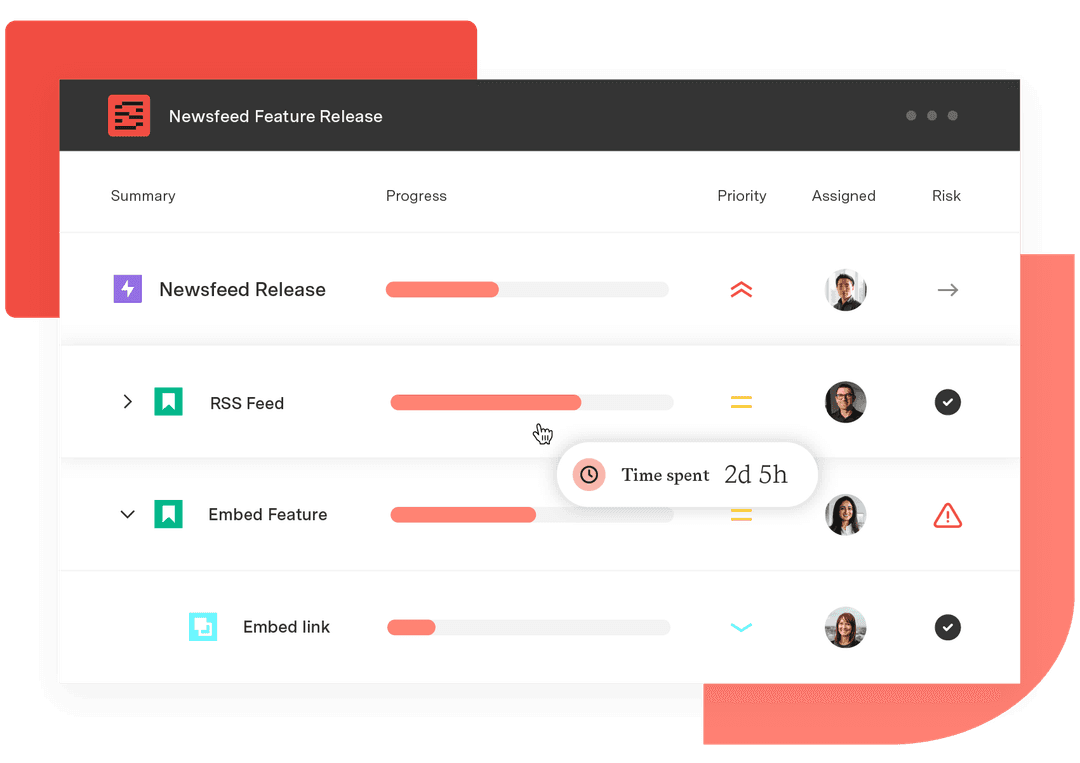Three ways to enable collaboration across agile teams
Tempo Team
Agile methodologies emphasize the value of collaboration as an effective way to build workable solutions to complex problems. When a group of people work together to achieve a common goal by sharing their ideas and skills, they are more likely to get the desired results – faster and more efficiently.
In reality, however, this is a tricky practice to get right. In today's work environment, it's not uncommon for companies to operate with global teams or at least a remote work policy, which adds to the complexity of implementing a collaborative structure. In this blog post, we’ll discuss how your workplace can enable and even improve team collaboration, even when faced with these challenges.
How to facilitate and optimize collaboration
“Coming together is a beginning, keeping together is progress; working together is success.” — Henry Ford
Ford knew he needed to foster teamwork in order to translate his vision for the assembly line technique of mass production into reality. That’s what collaboration is all about. In order to achieve effective collaboration in the workplace, you should:
1. Communicate clear goals and expectations
The most collaborative workplaces have one thing in common: everyone in the team clearly understands the main objectives they are working toward as an organization. It ensures each team is driving toward delivery of the big picture, and also promotes greater ownership of a project and increased accountability.
In order to achieve this, every team leader needs to clearly communicate the short and long-term goals, and explain how the team’s goals connect to the overall strategic plan of the organization. Everyone needs to know which part of the project they are accountable for, and who they can rely on for support and resources. It’s important to also establish program metrics and timelines with the team and regularly track and share progress updates so that stakeholders know when deliverables are completed and can focus on executing other aspects of the project.
2. Get rid of organizational silos
Silos breed an environment where collaborative work becomes virtually impossible. Siloed teams often lead to siloed information, which can completely derail cross-functional collaboration and hinder the progress of so many agile implementations. Silos create overlapping functions, inflated costs, duplicated efforts and inconsistent decisions among entities — impacting business agility and growth.
In order to avoid developing information silos and increase collaboration within your organization, it is important to establish a process that facilitates documentation and discussion. For instance, if the testing team finds a defect, they should alert the developer and the product owner and ask for a brief discussion on the issue. Rather than just tossing information over the wall, teams need to take shared ownership of issues and follow up with a sense of responsibility. Timely input and direct interaction between different roles and team members throughout the development process can help maintain efficiency, product quality, and team motivation.
3. Embrace modern collaboration technology
Modern workplaces require continuous, ongoing collaboration across teams to encourage creative interaction and faster decision making. Antiquated systems that provide minimal collaboration internally between different tiers in the hierarchy often fall short in this respect.
Scrum task boards, agile kanban boards and other team collaboration tools foster collaboration across teams and departments by providing better visibility into project statuses, KPIs, and real-time data. With multiple teams continuously working on increments and builds into a single product base, enabling end-to-end integration across the tools that support the development process becomes key to successful collaboration over the entire development cycle. Integration with issue tracking software (such as Jira), team collaboration applications (such as Slack), development tools (such as BitBucket, Jenkins and Bamboo), and planning tools (such as Tempo Planner, Portfolio, BigPicture, or Aha!) can make information flow seamless and meaningful.
Are you ready?
As we move rapidly toward a future of digital transformation and agile businesses, the creation of a truly collaborative environment will become an essential prerequisite for innovation and success.
An agile organization with a dense network of empowered teams can function with high standards of alignment, accountability, and transparency, and engage in complex multidirectional communication with customers, partners, and colleagues.
In order to make the leap, we need to create a stable ecosystem, with resources and rewards dedicated toward the creation of a purposeful and sustainable collaborative culture.
Sign up for a demo
Register













































